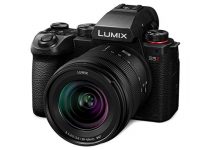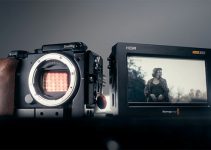Shooting in front of a perfectly lit white background in a professional studio environment is an easy task, but what if you need to create the seamlessly lit white background from scratch with little or no money? Rob of Rob & Jonas’ Filmmaking Tips will show us how you can get decent results even when you are working on a shoestring budget.
Actually, you can build this setup quite easily almost anywhere as long as you follow a few simple tips and tricks showcased in the videos below. Overall, a simple white background could be an extremely versatile tool to have whether you are working on a corporate project, doing an interview, shooting a music video or anything in between.
To start off, you can utilise either a big piece of white wrinkle-free fabric or a white wall that needs to be lit as evenly as possible. You can pull this off with just three light sources – two for your background and one for your main subject. The most important rule is to keep the background a little bit brighter than your subject. Another essential tip is to focus your background lights so that they don’t spill on your talent.
Additionally, you can utilise two black backgrounds on each side of your setup if you want to eliminate completely the light spill bouncing from the side walls. This step is mandatory, especially if you have white walls all over the place.
Furthermore, keep your subject far enough away from the background so that you will be able to avoid spilling unwanted light on each. Remember that there should be good contrast on your subject. If the background lights are too bright, you’ll notice a lack of contrast on the face of your interviewee. Another issue that you might come across if your background is too bright is that you will start losing detail on the main subject.
For instance, your talent’s hair could be a very sensitive area in those terms so look for artefacts and lack of detail there first. Here’s how your final setup should look like if you have done everything properly.
Again, the optimal balance between lights on those occasions is crucial. Typically, this balance can be measured as a difference of a stop and half in the exposure between your main subject and the background. If you don’t have that proper ratio, you are going to get either a grey or a blown out background as a result.
To avoid that issue, get your subject lit first and nail down your exposure. Then bring on the background lights and set them accordingly. If you want to dip your toes into the details and explore the various lighting setups and different uses of a white background further watch the excellent 20+ minute video on the subject produced by Zack Arias below.
Ultimately, you can light your subject in many different ways, but as long as you maintain the optimal exposure ratio between the background and foreground lights, you will get seamless professional results for any of your productions.
[via: ISO1200, source: Rob & Jonas’ Filmmaking Tips, Zack Arias]
Disclaimer: As an Amazon Associate partner and participant in B&H and Adorama Affiliate programmes, we earn a small comission from each purchase made through the affiliate links listed above at no additional cost to you.




